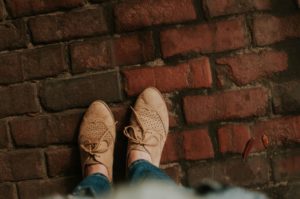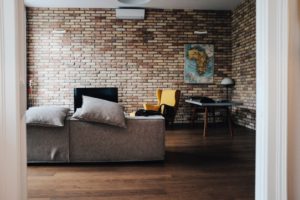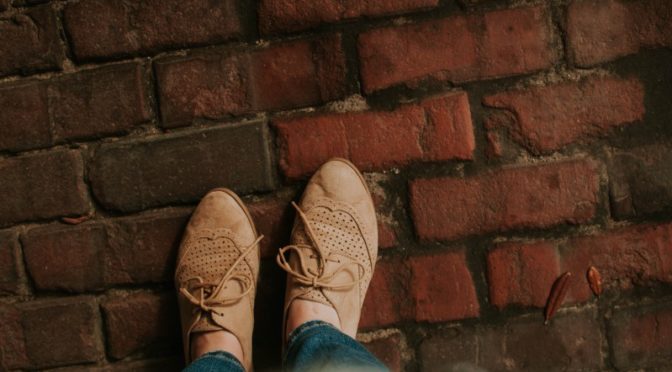
There are few architectural materials more common in today’s world than brick. It’s classic, durable, and attractive, and has found a wide range of uses in residential and commercial design. But while you’ve likely seen brick used just about everywhere outside of a building, you might not have thought of using it as a flooring material. The long and short of it is that as durable as brick is, it does pose certain challenges when used in indoor flooring. That said, with judicious use, you can have a positive and financially sensible experience with brick floors in your home. Today we’ll look at the benefits and drawbacks of installing an indoor brick floor.
Brick is surprisingly affordable and aesthetically appealing

When you buy brick flooring, you’re not going to buy the kinds of bricks you find in interior and exterior walls; rather, you’ll be buying and installing pavers. Brick pavers typically cost between $5 and $11 per square foot. You can sometimes find cheaper pavers for $3 per square foot. Naturally, you’ll want to stay away from the absolute cheapest materials you find. The take-home point is that brick prices are roughly comparable to those of hardwood floors on the low end.

Brick is also an appealing floor from a design standpoint. A brick floor is a comforting, cozy, and inviting one. People instinctively know what it is; there’s no guessing involved like when trying to tell hardwood from engineered wood. It’s familiar to the mind, which brings a sense of peace.
Brick also has practical benefits. Underfoot, it’s rough enough to give a good amount of traction, even if it’s wet. That said, it’s important to note that brick won’t provide good grip if you wax it. But regardless of whether it’s waxed or not, unlike tiles and concrete, brick will keep its temperature year long, meaning it won’t leave your feet freezing in the winter. If you add a radiant heating system below it, it’ll be positively warm.
Beyond savings and warmth, it’s natural, durable, and fireproof

If you’re tired of synthetic, plastic-based things all over your home and want more organic, earth-based options, you owe it to yourself to consider brick. It’s primarily made from clay, which comes straight from the earth, in addition to kaolin and shale, two natural minerals found throughout the globe. The fact that brick is one of the oldest construction materials in human history attests to its largely chemical free nature; you won’t need to worry about off-gassing the way you would with a nylon carpet or vinyl floor.

Part of what makes brick such a long term bargain is its durability. It’s easy to get decades out of a brick floor; some brick buildings have been standing for hundreds of years without fault. Proper maintenance is key, but when you keep your brick in good condition, you won’t have to worry about tearing up and changing floors each decade; it can be a buy-it-for-life floor.

From a safety perspective, it’s comforting to know that brick is fireproof. It’s not going to burn at any temperatures a fire can reach in a residential home. As a result, if you’re unfortunate enough to have a fire in your home, you can gain valuable minutes for escape if you have brick flooring, as it will make it dramatically more difficult for a fire to spread from one room or floor to another. Similarly, you’ll be less likely to have accidental fires start by dropping hot objects on brick, as it won’t catch fire simply by being exposed to candles, cigarettes, or open flames.
However, brick is heavy, hard, messy to replace, and is a moisture magnet

That said, there are reasons why brick floors aren’t lining homes throughout the United States and Canada, and we want you to be aware of them. First of all, while brick is admired for its durability, that strength comes at a price: brick is hard. It’s hard enough that you might not want to stand on it for extended amounts of time (although it’s not nearly as unforgiving as concrete). There are very few brick nurseries. It’s also far more likely to break fragile objects that land on it than most bare floors (although porcelain and ceramic tiles are equally hard in this respect). Keep the weight in mind; like tile, you’ll generally only be able to install brick on your first floor due to how heavy it is unless you reinforce your upper floors.

Leaving aside brick’s heft, it’s also going to be a beast to replace if you ever decide you’re tired of its weathered look. There’s no selective replacement of pavers the way you would with tile; you’ll need to smash the pavers with sledgehammers before scraping them out of the mortar holding them to your floor. It’s a difficult job and if you don’t do it, you’ll pay handsomely for someone who will.

Finally, brick is porous, like most natural stones (although brick itself isn’t a natural stone but a composite of various minerals). If you don’t seal it and finish it, it’ll absorb water and other liquids when you spill them, leading to staining, mold, and mildew with time. Like concrete, you’ll want to pay attention to sealing to keep your brick in tip top condition.
Which vacuums best clean brick floors and carpets?

While you can technically use any vacuum capable of cleaning hardwood floors to clean brick, due to the more textured nature of brick flooring, we tend to recommend vacuums with electric brush heads and adjustable cleaning heights. An electric head will also let you switch seamlessly from cleaning brick floors to cleaning carpets of any pile and style without needing to switch heads. Two exemplary vacuums with adjustable electric brush heads are the Miele Complete C3 Cat & Dog (reviewed here and here) and Miele Compact C2 Electro+ (reviewed here and here). Both also include Parquet heads if you’ve waxed your brick flooring and want to polish it whenever you vacuum it.
![]() You can buy the Miele Complete C3 Cat & Dog here on Amazon or buy the Miele Compact C2 Electro+ here.
You can buy the Miele Complete C3 Cat & Dog here on Amazon or buy the Miele Compact C2 Electro+ here.
![]() Canadians can buy the Miele C3 Cat & Dog here or buy the Compact Electro+ here.
Canadians can buy the Miele C3 Cat & Dog here or buy the Compact Electro+ here.
 If you find our research on PMC helpful, you can follow our efforts to keep maniacally reviewing home cleaning tools by shopping through our links above. We promise to keep fighting the good fight against every horror children, animals, and grown, yet messy humans can inflict upon a clean home.
If you find our research on PMC helpful, you can follow our efforts to keep maniacally reviewing home cleaning tools by shopping through our links above. We promise to keep fighting the good fight against every horror children, animals, and grown, yet messy humans can inflict upon a clean home.

